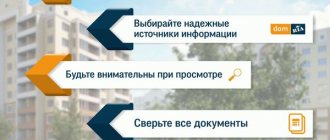Unified State Register of Real Estate is an abbreviation used to denote the unified state register of rights to real estate. The formation of the organization was stipulated by the articles of Federal Law No. 122 of July 21, 1997. But in less than 10 years of its existence, the organization was subject to repeated reforms, until in 2017 the register ceased to exist, giving way to the Unified State Register of Real Estate (USRN). The Unified State Register of Enterprises is a now non-existent body, but the abbreviation continues to be actively used by the population.
What is the Unified State Register?
Unified State Register, what this means, is indicated in the provisions of the Federal Law. So, this is a single database of all real estate objects, the maintenance of which falls on the shoulders of Rosreestr. After the formation of the organization, the virtual register was partially filled with officials. Further data entry occurred thanks to the citizens themselves, as well as the transactions they carried out with property. Registration of new properties and editing of information about old real estate should be reflected in the virtual database.
The Unified State Register decoding is familiar to every citizen who has had to face the need to participate in legal transactions with real estate. This applies to property rights to land plots, apartments, houses and dorm rooms. Unified State Register (EGRN) contains data on the following categories of objects:
- records of privatized land plots;
- cadastral information about non-privatized land;
- about private houses and apartments;
- about objects under construction (as part of preschool building or private construction);
- about individual rooms in dormitories and communal apartments;
- about objects that are in joint or shared ownership.
In addition to creating a virtual register, the State Register allows you to obtain a certificate about any desired object for additional verification.
Rules for maintaining and composition of the Unified State Register?
What are the principles of maintaining the Unified State Register? The maintenance of this register is entrusted to the territorial and head bodies of Rosreestr. Since the collection of information is a single database, and there are many people entering information into it, special rules for its maintenance have been adopted. They are designed to streamline the process of making entries, changing them and canceling them.
We can highlight the main nuances of maintaining the Unified State Register:
- all information is contained in the official language for the Russian Federation, Russian;
- when entering them, a single automated system is used;
- information must be reliable and reflect the current state of the real estate and rights to it;
- these data are open in nature, so their accessibility must be ensured;
- they are contained on paper and electronic media, but the main one today is the electronic maintenance of the register;
- the register consists of separate sections and subsections;
- the information entered into these sections (subsections) must be certified by the electronic signature of the registrar and contain the exact time and date of its completion;
- Each record is assigned a specific status (current, canceled, archived).
In addition, the information available in the register can be changed, supplemented or cancelled.
Expert lawyer's opinion:
Expert opinion
Gumenyuk Ekaterina Vladimirovna
Rosreestr - worked as a state registrar of rights. Head of the property department. I help solve problems that arise with real estate.
Structure of the Unified State Register
The activities of the unified state register of rights to real estate and transactions with it are carried out through official division into various structural units. This allows you to carry out work quickly and efficiently. Thus, the following divisions were organized on the basis of the Unified State Register:
- technical description of objects;
- storage of title documents, confirmation of the legal right to use and dispose of property;
- the emergence of new encumbrances or the elimination of information about monetary and legal restrictions that are no longer relevant;
- entering rental data;
- displaying information about mortgage lending;
- transactions;
- registration of contracts for temporary use of objects;
- establishment of arrest.
When preparing a unified state extract, all these categories of data are indicated in the certificate. This allows you to check the legal purity of the property before participating in real estate transactions.
What is stored in the Unified State Register of Real Estate
Please note that the structure of the government body has changed. Now it has become more convenient for legal entities and individuals.
The structure is as follows:
- Register of real estate objects.
- Register of rights and encumbrances.
- Register of boundaries.
- Registry matters.
- Cadastral maps.
- Books of accounting of official papers.
Extract from the Unified State Register
USRE, USRN, USRIP have the right to issue certificates displaying information about real estate objects. Such certificates are prepared taking into account the following principles:
- the procedure is not free, and you need to order information with the simultaneous payment of a state fee;
- individuals and legal entities, individual entrepreneurs, state and municipal authorities can request information;
- there are open and closed types of data (the difference is that open data includes only that information that does not violate the law on the protection of personal data - it is available to all applicants, and closed data is issued only in favor of property owners);
- A document can appear in two ways: electronic or on paper.
Such a certificate, if all the required details are present, has legal force. And the contents of the paper may include the following categories of information:
- type of property and location address;
- technical description of the property;
- number assigned in the cadastre;
- information about the owners;
- information about existing encumbrances;
- information about all registered persons.
This data may be required in the following circumstances:
- for state registration of property rights for the new owner;
- to replace any information about an object;
- so that the acquirer can verify the legal purity of the object;
- for sale by a transferor under a mortgage;
- for the purpose of transferring real estate as collateral;
- to receive valuables under a gift or inheritance agreement;
- to protect property rights in court
Payment of state duty
One of the principles of maintaining the Unified State Register is its openness and accessibility to any person. This means the procedure for providing (receiving) this information should be simple. However, despite its accessibility, obtaining information from the registry is not free.
Persons wishing to familiarize themselves with them will have to pay a state fee. For citizens (individuals) today it is at least 300 rubles.
But for organizations (legal entities) it is calculated starting from 950 rubles. There is also a fee for various registration actions.
You will have to pay a certain fee for registration:
- Rights to real estate.
- Encumbrances, easements.
- Share participation agreements.
- Mortgages.
- Making changes to the Unified State Register records.
Each action requires a separate fee. However, it also differs in size for individuals and legal entities. A full list of paid actions and the amount of the fee can be seen on the Rosreestr website.
Features of real estate registration
You can register new real estate or make changes to current information about property only with the personal presence of all participants in the legal transaction in Rosreestr. Citizens must independently draw up an application, as well as submit a complete package of documents confirming their voluntary participation in the transaction.
The period for generating a registration record does not exceed five working days and each interested person will have to pay an additional 400 rubles for participation in the procedure.
Registry rules
The rules were approved by the relevant Government resolution in 1998. At the beginning of 2015, a number of changes were made to the rules for maintaining the Unified State Register, which have already entered into force and are in practice.
The most important changes include the following:
- The main way to enter information is electronically. Only in some cases is the use of paper media allowed.
- From now on, entries made in the Unified State Register will be classified as current, canceled and archived. This division will serve to organize the information in the register.
- It is possible to make an additional entry to the current one regarding the presence of objections to the right to real estate.
- The new Rules are supplemented by a description of the procedure for registering ownership rights to a single real estate complex, the concept of which appeared in the new version of the Civil Code of the Russian Federation.
- It is possible to submit data to be entered into the register in electronic format.
- It is proposed to assign a conditional number to the property if it has not previously been assigned a cadastral number.
More than one department will be responsible for maintaining the state register. This responsibility is assigned to the Federal State Registration Service and its subordinate bodies.
All changes are aimed at optimizing the process of maintaining a database of real estate rights.
Independently obtaining an extract from the Unified State Register
Unified State Register can issue extracts to all applicants, regardless of whether they have ownership rights to the object. In this case, it is necessary to take into account the following features of the implementation of the procedure:
- payment of state duty is mandatory;
- it is necessary to prepare a handwritten application (when applying in person, only a signature is sufficient; when submitting an application via the Internet, an electronic signature will be required; when submitting an application by mail, copies of all documents must be notarized);
- Among the documents there must be papers confirming the sufficiency of the grounds for filing the application (signing of a purchase/sale agreement, inheritance, etc.).
If a citizen cannot independently participate in a transaction, then a representative can be involved, acting on the basis of a notarized power of attorney.
How to get a?
There are no particular difficulties in obtaining an extract. If desired, an interested citizen has the right to send a request and receive updated data on real estate in one of the preferred ways:
- Personal appeal to the territorial office of Rosreestr. You will need to present a civil passport and a payment document indicating payment of the duty. Having submitted a written request for an extract, after 5 days you can come and pick up the finished document.
- If there is an electronic signature, the order is sent through the Rosreestr website.
- Applying for paid services to specialized companies. Hired employees independently organize the process of ordering and receiving an extract, sending the completed document to the customer via courier.
The basis for consideration of the application is the application received from the individual, drawn up in accordance with the sample approved by Rosreestr.
The application reflects information about the object of interest (address and basic information from the BTI technical passport, which will help identify the object).
Receipt procedure
There are several ways to submit an appeal. You can do this:
- In person at the local branch of Rosreestr. A citizen with the originals of all papers and one copy of each document applies to the competent registrar. The official provides an application form or a completed sample, as well as details for paying the state fee. The applicant endorses the check, after which the process of checking the submitted documents and issuing an extract begins.
- Through MFC. Multifunctional centers can only accept applications and documents, transferring them further to Rosreestr for execution. This process takes a little longer and in the future the applicant will have to contact Rosreestr to obtain a certificate.
- Using Internet portals. Remote access is equally available on the State Services website, as well as on the official website of Rosreestr. To use the services, you will have to go through a preliminary registration procedure and obtain an individual electronic signature. When submitting your application, you will need to upload scanned copies of all documents. You can pay the state fee immediately when filing your application.
- Postal service. Russian Post operates through the “valuable parcel” option. This guarantees the safety of the shipment and its prompt delivery to the addressee. The nuance is that the application itself and all copies must be certified by a notary.
How is data about a new object recorded?
The procedure for registering a property and its owner. Photo No. 2
Any information is entered into the database on the basis of submitted applications and the necessary documents, provided that the state fee has been paid. The main documents required for registration and entry are:
- Identity of the applicant (copyright holder).
- Confirming that a given person has rights to the object (objects).
If all documents have been prepared and the fee has been paid, then you need to choose one of the available methods for submitting documents. This can be done directly at the Rosreestr office. It does not matter which department the documents will be submitted to. They can be accepted by any office, regardless of the location of the facility.
You can also submit an application through the MFC or the government services portal. Sending documentation by mail is not prohibited. But in this case, the signatures on the application and other papers must be notarized.
Since we are talking about registering a new property, the application can also ask for it to be registered (cadastral). After receiving all the information, the registrar enters it into the appropriate sections of the registry.
It reflects information:
- about the object itself;
- its copyright holder;
- form of law;
- documents confirming these rights;
- existing encumbrances.
Validity period of the extract from the Unified State Register
According to the general rule, the certificate is valid only for 30 days, so it will no longer be possible to use it after this period. Before the expiration of the specified period, citizens can use the extract as many times as necessary for the successful completion of the transaction.
Another term that you need to pay attention to is the duration of document production. Thus, the minimum readiness period is 5 days, and the maximum does not exceed 14 days. Therefore, to ensure the relevance of the information provided, it is better to request an extract three weeks before the designated date of participation in legal transactions.
The cost of the document depends on the form in which the response will be prepared. If the applicant only needs to receive an electronic document, he will have to pay 400 rubles. The extract will contain all required details. All you need to do is download and print it.
If you want to issue a paper certificate, you will have to pay 1,400 rubles. These figures are the same throughout the Russian Federation and are recorded in the Tax Code.
Making changes to the database
Changes to the Unified State Register are made in the following situations:
- information about the owner has changed;
- the place of residence of an individual or the legal address of an organization has changed;
- the functional purpose of the object has changed;
- the area of the room or its layout has undergone changes.
The procedure to follow if one or more of these cases occurs is as follows:
- Drawing up a statement about the need to make changes.
- Providing a document that would confirm the changes that have occurred: an extract from the BTI, personal documents.
- Payment of state duty for making changes to the Unified State Register.
In addition to the application, other documents will be required:
- passport or other document confirming the identity of the applicant;
- power of attorney, if another person acts on behalf of the owner;
- receipt of paid duty.
Some documents may be requested from the organization by the registration authority as part of interdepartmental cooperation.
Amendments to the Unified State Register, according to the current rules, are made within a period not exceeding 30 days .









